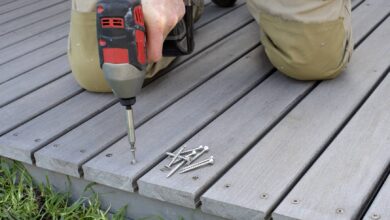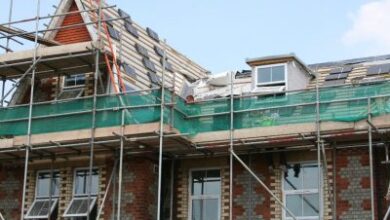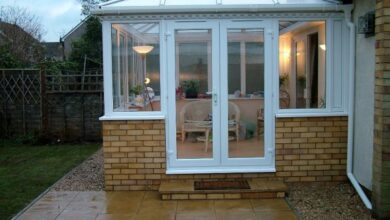The Role of Curtains in Home Insulation
Curtains are more than just decorative elements in a home; they play a significant role in energy efficiency and insulation. Properly chosen and installed curtains can help maintain a comfortable indoor temperature, reduce energy consumption, and ultimately lower utility bills. This comprehensive guide will explore how curtains contribute to home insulation, the types of curtains best suited for this purpose, and tips for maximizing their insulating effects.
Understanding Home Insulation
Home insulation refers to the materials and methods used to prevent heat transfer between the inside and outside of a building. Effective insulation keeps heat inside during the winter and outside during the summer, creating a more stable indoor environment and reducing the need for heating and cooling.
Curtains contribute to insulation by:
- Reducing Heat Loss: In colder months, curtains can trap heat inside a room, preventing it from escaping through windows.
- Blocking Heat Gain: During warmer months, curtains can block out the sun’s heat, keeping interiors cooler.
How Curtains Enhance Insulation
Thermal Insulation
They are also known as insulated curtains, are specifically designed to enhance a room’s thermal efficiency. These curtains typically have multiple layers, including a core insulating layer that reduces heat transfer.
Benefits:
- Energy Savings: By reducing the need for heating and cooling, they can lower energy bills.
- Comfort: They help maintain a consistent indoor temperature, improving overall comfort.
Materials and Construction:
- Core Layer: Often made from foam or other insulating materials.
- Outer Layers: Can be made from various fabrics, including polyester, cotton, or velvet, which add to the insulating effect and provide aesthetic appeal.
- Lining: An additional lining can enhance their thickness and insulating properties.
Reflective Properties
They come with reflective backing, typically made from a metallic coating. They are designed to bounce sunlight away from the window, reducing heat gain during summer.
Benefits:
- Cooler Interiors: They can significantly lower indoor temperatures during hot weather.
- UV Protection: They also protect furniture and flooring from fading by blocking harmful UV rays.
Air Barriers
They can act as barriers to drafts, preventing cold air from seeping into the room through windows and warm air from escaping.
Benefits:
- Draft Reduction: Creates a more airtight barrier around windows, enhancing overall insulation.
- Increased Comfort: Reduces drafts, making rooms feel warmer during the winter.
Types of Insulating Curtains
Thermal Curtains
They are specifically designed for insulation, featuring multiple layers of fabric and insulating materials.
Features:
- Multi-layer Construction: Typically includes a decorative outer layer, a thermal insulating layer, and a protective lining.
- Versatility: Available in various styles and colors to match different interior designs.
Best For:
- Bedrooms: To maintain a comfortable sleeping temperature.
- Living Rooms: To enhance comfort and reduce energy costs.
Blackout Curtains
While primarily designed to block light, they(curtain in Dubai) also provide good thermal insulation due to their thick, heavy fabric.
Features:
- Thick Fabric: Made from dense materials that prevent heat transfer.
- Light Blocking: Ideal for bedrooms and media rooms.
Best For:
- Bedrooms: To block out light and maintain temperature.
- Home Theaters: To control light and temperature for optimal viewing conditions.
Cellular Shades
Although not traditional curtains, cellular shades (also known as honeycomb shades) are excellent for insulation. They feature a unique honeycomb structure that traps air and creates an insulating barrier.
Features:
- Honeycomb Design: Creates pockets of air that enhance insulation.
- Light Control: Available in various opacities for different light control needs.
Best For:
- All Rooms: Due to their versatile design and effective insulation properties.
Installation Tips for Maximizing Insulation
Proper Measurement
Ensure curtains are wide and long enough to cover the entire window, extending beyond the frame. This maximizes their insulating properties by preventing air from leaking around the edges.
Layering Curtains
Consider layering different types of them for enhanced insulation. For example, pair them with sheer curtains to allow for light control and privacy during the day while maintaining insulation at night.
Seal the Edges
Use curtain rods that allow them to hang close to the wall or window frame. Additionally, consider using magnetic or Velcro strips along the edges to seal any gaps where air might escape.
Use Pelmets and Cornices
Install pelmets or cornices at the top of them to prevent air from escaping over the top. These structures cover the curtain rod and create a more airtight seal, enhancing insulation.
Additional Benefits of Insulating Curtains
Noise Reduction
Thick, insulated curtains can also help reduce noise pollution by absorbing sound. This is particularly beneficial in urban areas or near busy streets.
Enhanced Privacy
Insulating them are typically made from thicker materials, which also provide better privacy by preventing people from seeing inside.
Aesthetic Appeal
With a wide variety of styles, colors, and patterns available, insulating them can complement your home’s decor while providing functional benefits.
Conclusion
They play a vital role in home insulation, offering significant benefits in terms of energy efficiency, comfort, and cost savings. By choosing the right type of insulating and installing them properly, you can enhance your home’s thermal efficiency, reduce energy bills, and create a more comfortable living environment. Whether you opt for thermal curtains, blackout curtains, or even cellular shades, the key is to ensure they fit well and are used strategically to maximize their insulating properties. Embrace the dual functionality of them as both design element and an essential component of your home’s insulation strategy.



